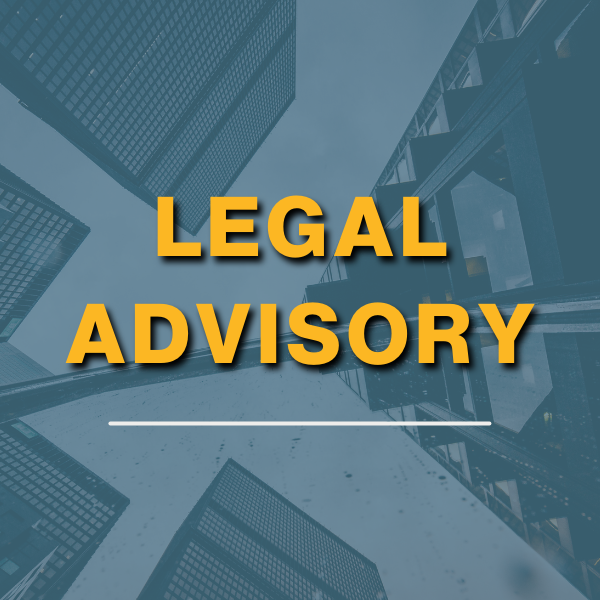In early November, the Occupational Safety and Health Administration (OSHA) issued an emergency temporary standard (ETS), requiring that businesses with 100 or more employees maintain mandatory COVID-19 vaccination and/or testing policies. Last week, the U.S. Supreme Court blocked enforcement and implementation of OSHA’s ETS, pending further review by the Sixth Circuit Court of Appeals.
How Did We Get Here?
OSHA published its ETS on November 4, 2021. Almost immediately thereafter, several states, employers, and nonprofit organizations challenged its enforceability, and the Fifth Circuit Court of Appeals initially issued a stay of enforcement and implementation of OSHA’s vaccination/testing mandates.
However, because many different parties challenged OSHA’s ETS in many different federal courts, a special judicial panel consolidated the cases and selected the Sixth Circuit Court of Appeals—via a lottery system—to hear them all. On December 17, 2021, the Sixth Circuit lifted the Fifth Circuit’s stay.
Multiple parties immediately challenged the Sixth Circuit’s decision by filing petitions with the Supreme Court. On January 13, 2022, the Supreme Court issued its decision staying implementation of the ETS until the Sixth Circuit reaches a final conclusion on the enforceability of OSHA’s ETS.
What Was the Supreme Court Rationale?
The Supreme Court’s majority opinion concluded that (1) the parties challenging OSHA’s ETS were likely to succeed on the merits and that (2) OSHA’s enforcement of the ETS must be placed on hold until the Sixth Circuit reached a final decision on the merits.
In coming to this conclusion, the Supreme Court noted that Congress created OSHA when it passed the Occupational Safety and Health Act of 1970 (the “Act”). Therefore, OSHA only has those powers that Congress expressly provided for in the Act.
According to the Supreme Court’s ruling, the Act only permits OSHA to regulate matters of workplace/occupational safety. Although COVD-19 impacts the workplace, it is not a workplace-specific risk. Instead, it is a disease that spreads everywhere including in schools, at sporting events, and any other place where people gather. In other words, COVID-19 is a general health risk—not just an occupational risk—and it reaches areas that fall outside OSHA’s area of expertise.
As the Supreme Court put it: “Permitting OSHA to regulate the hazards of daily life—simply because most Americans have jobs and face those same risks while on the clock—would significantly expand OSHA’s regulatory authority without clear congressional authorization.”
Justices John Roberts, Amy Coney Barrett, and Brett Kavanaugh issued the Supreme Court’s decision, and Justices Samuel Alito, Neil Gorsuch, and Clarence Thomas authored a concurring opinion.
The liberal wing of the Supreme Court—consisting of Justices Sonia Sotomayor, Stephen Breyer, and Elena Kagan—dissented. The dissenting justices indicated that the Act demands OSHA to issue emergency temporary regulations when (1) “employees are exposed to grave danger…from new hazards” and (2) an “emergency standard is necessary to protect employees from such danger.”
Noting that COVID-19 constitutes a new hazard that poses a grave danger to millions of employees and noting that tests, face coverings, and vaccinations serve as proven methods to address that danger, the dissenting justices opined that the Act actually requires OSHA to issue regulations related to COVID-19 and the workplace.
What Comes Next?
The Supreme Court’s decision is not the final word on this matter. Instead, it merely stays implementation/enforcement of the ETS until the Sixth Circuit can fully review challenges to the ETS.
The Supreme Court did opine, however, that the parties challenging the ETS were likely to prevail. For this reason, OSHA may—in an effort to address the Supreme Court’s concerns about the extent of the agency’s powers—issue a more narrow/limited set of workplace COVID-19 regulations.
More Insight from McCarthy Lebit on the “Vaccine Mandate”
Ann-Marie Ahern & Jack Moran Discuss President Biden’s Vaccine Mandate
Listen to Employment Litigators Ann-Marie Ahern and Jack Moran from a recent episode of our podcast – The More Report, Podcast Edition – as they discuss the viability of the “vaccine mandate” in the face of probable legal challenges.
Sixth Circuit’s Reversal of Fifth Circuit’s Stay of OSHA ETS
Check out the previous legal advisory from Frank George, published on December 22, 2021, to read more about details, highlights, and updates on OSHA’s ETS.
OSHA Releases COVID-19 Vaccine Rules but U.S. 5th Circuit Blocks Them
Check out the previous legal advisory from Frank George, published on November 9, 2021, to read more about details, highlights, and updates on OSHA’s ETS.
Author
-

Frank T. George
Frank George is an Associate at McCarthy Lebit and primarily practices in the area of unemployment where he focuses on being an advocate and trusted adviser to victims of discrimination. Learn more about Frank and his practice.
